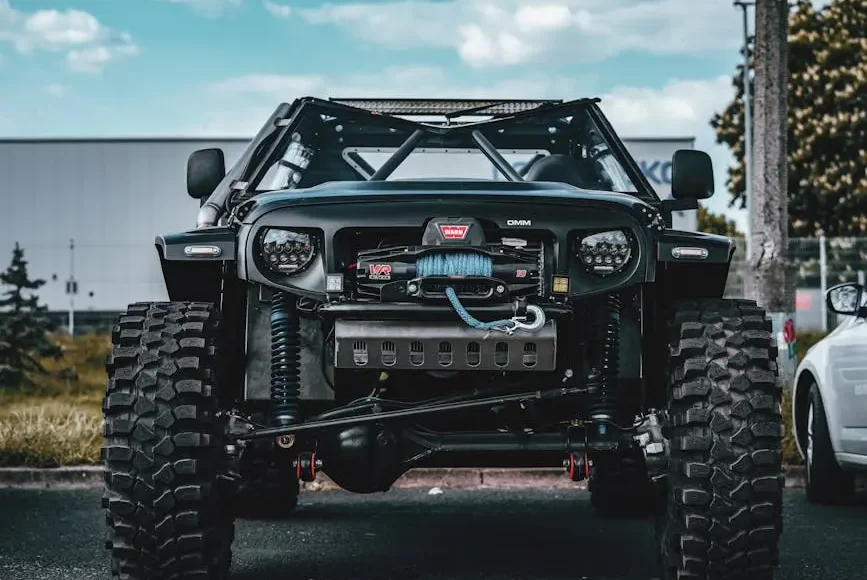- November 10, 2024
- By
- In Uncategorized
- 87
- 0

Car winching can be a lifesaver when you’re stuck, but questions about its safety for your vehicle might make you hesitate. Let’s explore if winching is safe and how you can protect your car during the process.
Car winching is a technique used to recover a vehicle that’s stuck or unable to move under its own power. It involves using a device called a winch, which can be electrically or manually powered, to pull the vehicle towards a solid anchor point, thereby freeing it. Winching becomes necessary in various scenarios, such as when your car gets bogged down in mud, snow, or sand, or when off-roading adventurers encounter challenging terrain where vehicles lose their grip. Understanding when and how to employ car winching can make the difference between a quick recovery and a prolonged ordeal.
Beyond its practical applications, experts consider winching a fundamental skill for any serious off-road enthusiast. Yet, it’s not just for those who enjoy the thrill of rugged landscapes; even city dwellers might find themselves in need of a winching operation if stranded due to unforeseen circumstances like severe weather conditions. Knowing how to use a winch safely and effectively ensures that both the vehicle and its passengers emerge unscathed.
While car winching can be an efficient solution, it presents certain risks that should not be overlooked. One of the primary concerns is the potential stress it can impose on a vehicle’s frame and suspension system. If the winching isn’t done correctly, it might lead to frame misalignment or suspension damage. Moreover, the vehicle’s electronics, such as sensors and wiring, can be vulnerable, especially if the operation is executed on uneven ground or involves significant tension.
Apart from structural concerns, a winching operation might inadvertently lead to cosmetic damages. The vehicle’s exterior, undercarriage, or paint job might suffer from unwanted scratches or dents during the recovery procedure. Thus, it’s crucial to assess the risks and weigh them against the necessity of using a winch, especially in everyday situations where alternative recovery methods might be available.
Choosing the correct equipment is paramount for a successful and safe winching operation. This begins with selecting the appropriate winch type and ensuring it has a rated capacity that meets or exceeds the weight of the vehicle. A winch that’s underpowered for the task at hand can snap cables or fail entirely, which could compound the challenges you’re facing. Equally important is having the correct type of cables and hooks, as they must withstand significant force during the operation.
In addition to the winch itself, other gear such as gloves, proper footwear, and protective gear are indispensable for ensuring one’s safety. According to guidelines outlined in How to Use Winch: Winching Techniques, verified equipment and correct setup of an electric winch according to the manufacturer’s recommendations can minimize mishaps and facilitate the recovery process.
To ensure your car remains safe during winching, employing correct techniques is vital. It starts with attaching the winch cable to solid recovery points on the vehicle – typically dedicated tow or recovery hooks designed to withstand the stresses involved. Ensuring the winch cable remains aligned straight with the vehicle during the pull will help avoid undue lateral stress that could lead to mechanical issues.
An often overlooked yet critical aspect is the use of a winch dampener, which is a safety measure that prevents harm if the winch cable snaps under tension. Additionally, operators should remain vigilant, staying clear of the taut winch cable and avoiding abrupt jerking motions which could damage vehicle parts or, worse yet, pose an injury risk. For an in-depth review of safety procedures, refer to this comprehensive winching guide.
Safety should always come first in any winching operation. One fundamental factor is conducting a pre-operation inspection of not just the winch, but all associated gear. Look for anything worn or frayed that could break under pressure, and perform regular maintenance checks as part of your safety protocol.
Equally important is establishing clear communication if more than one person is involved. Use hand signals or radios if necessary to ensure everyone remains on the same page, as mishaps commonly arise from confusion during complex maneuvers. Moreover, avoid standing in the direct line of the cable, as a snapped rope can behave like a whip, causing potential injuries.
In certain situations, the potential for injury or vehicle damage may outweigh the benefits of attempting a DIY winching operation. If the vehicle is precariously stuck or in a position that seems risky or unstable, it may be prudent to call for professional assistance. Experts possess specialized knowledge and equipment to handle complex recoveries safely and efficiently.
Ultimately, understanding your limitations can be just as crucial as knowing how to winch. Acknowledging the scenarios where seeking professional help is advisable ensures both your safety and the integrity of your vehicle, allowing for a recovery effort that is both successful and secure.
While car winching can be safe if done correctly, it’s essential to understand the risks involved and take preventative measures. By ensuring proper technique and using suitable equipment, you can reduce the chances of damage and safely get your vehicle back on the road.